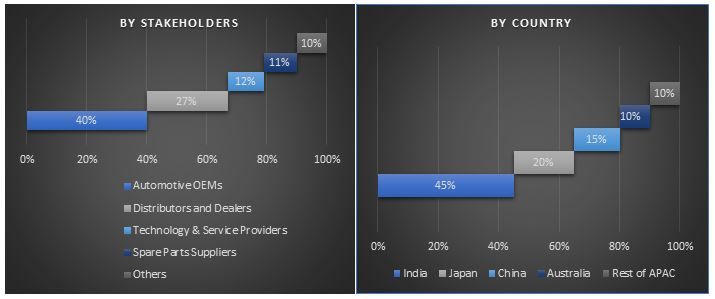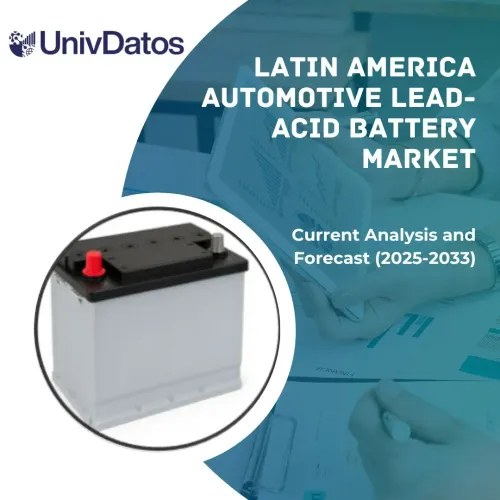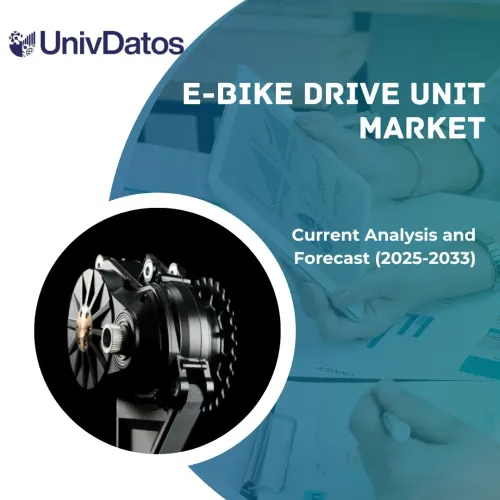- Home
- About Us
- Industry
- Services
- Reading
- Contact Us
Asia Pacific Automotive Head-up Display Market: Insights and Forecast (2018-2024)
Emphasis on Product (Windshield HUD, Combiner HUD), Technology (Conventional HUD, Augmented Reality HUD), Vehicle Type ( Luxury Cars, Passenger Cars, Commercial Vehicles) – Insights and Forecast, 2018-2024
In the past few years, Asia Pacific witnessed a recovery in its economic condition, which improved the lifestyles of consumers. This, in effect, resulted in increased buying potential of the consumers for high end vehicles equipped with advanced safety and security systems. In addition to this, the Asian automotive industry is experiencing an impressive phase today, holding the largest market share in several business segments. Owing to such factors, the demand for head up display systems in automobiles have increased, making the region the fastest growing economy during the forecast period. The presence of some of the leading automotive OEMs and Tier 1 head up display system suppliers and increasing penetration of advanced driver assistance systems (ADAS) and autonomous vehicles are further fuelling the market growth. Asia Pacific automotive head up display market is expected to reach $851.27 million by 2024. However, the excessive cost of the system, existence of counterfeit market and emergence of active window display technology are considered to be the major restraining factors for the market growth.
Insights Presented in the Report:
- Based on different product types, Asia Pacific Automotive Head-Up Display market is bifurcated into windshield HUD and combiners HUD. Windshield HUD held the largest market share in 2017 and is expected to maintain its dominance over the forecast period (2018-2024). On the other hand, easier installation capabilities due to the compact size of combiners HUD is expected to fuel their demand, making combiners HUD the fastest growing product type during the forecast period.
- Asia Pacific HUD market is further segmented based on different technologies, which includes conventional and augmented reality. In 2017, augmented reality held the maximum share with a market value of $138.50 million and is expected to prevail till 2024. However, the rise in adoption of conventional technologies in mid-priced and economic vehicle segment is expected to propel their demand, making them the fastest growing segment during the forecast period (2018-2024).
- To understand the market of different distribution channels of Asia Pacific’s HUD industry, the market is fragmented across two channels- OEMs and aftermarket. OEMs segment dominated in 2017 and is expected to remain the principal distribution channel during the forecast period.
- The market penetration of HUD is increasing across all vehicle types, such as luxury cars, passenger cars and commercial vehicles. Because of largest market and high market penetration of HUD in passenger cars, this segment held the maximum share in 2017 and is anticipated to dominate over the forecast period.
- For a deep dive analysis of automotive HUD market in Asia Pacific, the regional market is further split into several countries. China, Japan, India, South Korea, Singapore, Australia and rest of APAC are among some of the most dominant markets in the region for automotive HUD. China held the largest market share in 2017 and is anticipated to reach $424.16 million by the end of the forecast period.
Top Companies Profiled
Some of the top companies profiled in the research report includes Visteon Corporation, Harman International Industries, Inc., Continental AG, TomTom NV, AUDI AG, Daimler AG, Robert Bosch GmbH, Denso Corporation, Aptiv Plc and Yazaki Corporation
Reasons to buy the Report:
- The study includes market sizing and forecasting analysis validated by authenticated key industry experts
- The report presents a quick review of overall industry performance at one glance
- The report covers in depth analysis of prominent industry peers with primary focus on key business financials, product portfolio, expansion strategies and recent developments
- Detailed examination on drivers, restraints, key trends and opportunities prevailing in the industry.
- Examination of industry attractiveness with the help of Porter’s Five Forces analysis
- The study comprehensively covers the market across different segments
- Deep dive regional level analysis of the industry
Customization Options:
The Asia Pacific Automotive Head-up Display Market can be customized to the country level or any other market segment. Besides this, UMI understands that you may have your own business need, hence we also provide fully customized solutions to clients.
Table of Content
Analyzing historical market, estimation of the current market and forecasting the future market of the Asia-Pacific Automotive Head-up Display market were the three major steps undertaken to create and analyze the overall adoption of Automotive Head-up Display in the Asia-Pacific automotive sector. Exhaustive secondary research was conducted to collect the historical market of the product/technology and overall estimation of the current market. Secondly, to validate these insights, numerous findings and assumptions were taken into consideration. Moreover, exhaustive primary interviews were conducted with industry experts across value chain of the Asia-Pacific automotive head-up display market. After all the assumption, market engineering and validation of market numbers through primary interviews, top-down approach was employed to forecast the complete market size of the Asia-Pacific automotive head-up display market. Thereafter, market breakdown and data triangulation methods were adopted to estimate and analyze the market size of segments and sub-segments of the market. Detailed research methodology is explained below:
Analysis of Historical Market Size
Step 1: In-Depth Study of Secondary Sources:
Detail secondary study was conducted to obtain the historical market size of the Asia-Pacific Automotive Head-up Display technology through company internal sources such as annual report & financial statements, performance presentations, press releases, inventory records, sales figures etc. and external sources including trade journals, news & articles, government publications, International Organization of Motor Vehicle Manufacturers, competitor publications, sector reports, regulatory bodies publications, safety standard organizations, third-party database and other creditable publications.
Step 2: Market Segmentation:
After obtaining historical market size of the overall market, detailed secondary analysis was conducted to gather historical market insights and share for different segments & sub-segments of the Asia-Pacific Automotive Head-up Display market. Major segments included in the report are product type, technology type and vehicle type.
Step 3: Factor Analysis:
After acquiring the historical market size of different segments and sub-segments, detailed factor analysis was conducted to estimate the current market size of the Asia-Pacific Automotive Head-up Display technology. Factor analysis was conducted using dependent and independent variable such as purchasing power, government initiatives, penetration of head-up display, government regulations in major country in the Asia-Pacific region. Historical trends of the Asia-Pacific Automotive Head-up Display market and their year-on-year impact on the market size and share in the recent past were analyzed. Demand and supply side scenario was also thoroughly studied.
Current Market Size Estimate & Forecast
Current Market Sizing: Based on actionable insights from the above 3 steps, we arrived at current market size, key players in market, market share of these players, industry’s supply chain, and value chain of the industry. All the required percentage shares, splits, and market breakdowns were determined using the above-mentioned secondary approach and were verified through primary interviews.
Estimation & Forecasting: For market estimation and forecast, weightage was assigned to different factors including drivers & trends, restraints, and opportunities available in the market. After analyzing these factors, relevant forecasting techniques i.e. Bottom-up/Top-down was applied to arrive at the market forecast pertaining to 2024 for different segment and sub-segments in major country in the Asia-Pacific region. The research methodology adopted to estimate the market size encompasses:
- The industry’s market size and rate of adoption of Automotive Head-up Display in major countries in the Asia-Pacific region in value terms (US$)
- All percentage shares, splits, and breakdowns of market segments and sub-segments
- Key players across different technologies and markets as well as market share of each player. Also, the growth strategies adopted by these players to compete in the rapidly growing Asia-Pacific automotive head-up display market
Market Size and Share Validation
Primary Research: In-depth interviews were conducted with the Key Opinion Leaders (KOLs) including Top Level Executives (CXO/VPs, Sales Head, Marketing Head, Operational Head, and Regional Head etc.). Primary research findings were summarized, and statistical analysis was performed to prove the stated hypothesis. Input from primary research were consolidated with secondary findings, hence turning information into actionable insights.
Split of Primary Participants
Market Engineering
Data triangulation technique was employed to complete the overall market engineering process and to arrive at precise statistical numbers of each segment and sub-segment pertaining to the Asia-Pacific automotive head-up display market. Data was split into several segments & sub-segments post studying several parameters and trends in the areas of Windshield HUD and Combiner HUD. Further, based on the technology type, Conventional HUD and Augmented Reality HUD were also taken into consideration in the evaluation of Asia-Pacific Automotive Head-up Display market and by vehicle type; the market is segmented into Luxury Cars, Passenger Cars and Commercial Vehicles.
Main objective of the Asia-Pacific Automotive Head-up Display Market Study
The current & future market trends of the Asia-Pacific Automotive Head-up Display are pinpointed in the study. Investors can gain strategic insights to base their discretion for investments from the qualitative and quantitative analysis performed in the study. Current and future market trends would determine the overall attractiveness of the market, providing a platform for the industrial participant to exploit the untapped market to benefit as first mover advantage. Other quantitative goal of the studies includes:
- Analyse the current and forecast market size of the Asia-Pacific Automotive Head-up Display in terms of value (US$)
- Analyse the current and forecast market size of different segments and sub-segments of the Asia-Pacific Automotive Head-up Display. Segments in the study include technology type, product type and vehicle type
- Define and describe the technologies and protocols used in the Automotive Head-up Display
- Anticipate potential risk present within the industry along with customer and competitor analysis
- Define and analysis of the government regulations for the Automotive Head-up Display in major countries in the Asia-Pacific region
- Analyse the current and forecast market size of the Asia-Pacific Automotive Head-up Display, for countries including China, Japan, India, South Korea, Singapore, Australia and Rest of Asia-Pacific
Define and analyse the competitive landscape for the Asia-Pacific Automotive Head-up Display Market and the growth strategies adopted by the market players to sustain in the rapidly growing market
Related Reports
Customers who bought this item also bought











